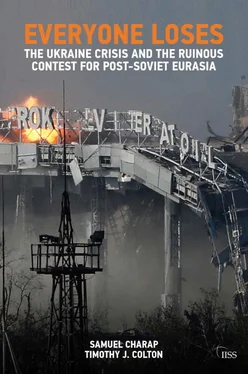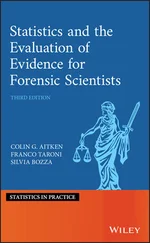The lack of an inclusive regional order did not prevent many non-trivial acts of cooperation and benevolence across the old East–West fault line after 1991. But the foreign-policy realm Russia scrutinised most diligently was its neighbourhood, where the political map had been profoundly reshaped since Gorbachev opened Pandora’s box. Given the fait accompli of an ever-larger NATO and, with a slight lag, an ever-larger EU, the countries of East Central Europe, including the Baltic trio, were fully absorbed into Western systems. Even hardliners in Moscow recognised that they were gone for good.
In another category entirely were the quintet of ex-Soviet republics in Central Asia. Landlocked and secluded from the European theatre, they were in no danger of decamping to the West; in fact, China soon became a much more palpable force there than Western governments or institutions. Two of them (Kazakhstan and Turkmenistan) owned shoreline on the Caspian Sea but did not share a land border with a member or prospective member of NATO or the EU. The Central Asians have thus played a secondary role in our story. Their importance as a great-power playground temporarily grew during the US-led operation in Afghanistan following 9/11 but faded following the exit of most combat troops in 2014. [48] For more on the role of external powers here, see Alexander Cooley, Great Games, Local Rules: The New Great Power Contest in Central Asia (Oxford: Oxford University Press, 2012).
The critical area of interest for our story consists of six ‘In-Betweens’, that is, former Soviet republics flanked by Russia and East Central Europe. Belarus, Ukraine and Moldova were situated to Russia’s west and southwest; Georgia, Armenia and Azerbaijan constituted the South Caucasus, a mountainous area lying between the Black and the Caspian seas. Belarus, Ukraine, Georgia and Azerbaijan bordered Russia; Moldova and Armenia were separated from it by a few hundred kilometres. Their combined 962,762 sq km was 6% of Russia’s land area, but their population, 82.1m, was 56% of that of the erstwhile imperial metropole. They varied on characteristic after characteristic: cartographic location, climate, size, economic conditions, language, religious tradition, past association with Russia. Still, they shared much history, remote and recent, Russian as a lingua franca, a multitude of informal practices and norms, and a visceral reaction to – and propensity to manoeuvre around – any foreign policy made in Moscow.
Ukraine, the state with which Russia’s relations were to be the rockiest, held custody of 63% of the In-Betweens’ population (51.8m) and 58% of their landmass (579,330 sq km). Russia had a latent territorial grievance against Ukraine over the Crimean peninsula, which had been reassigned from RSFSR to Ukrainian jurisdiction by Nikita Khrushchev and the Soviet leadership in 1954. Acrimony flared up over proprietorship of the Soviet Black Sea Fleet, headquartered in Sevastopol, Crimea, which had 100,000 personnel and 835 ships in 1991. A treaty of ‘friendship, cooperation and partnership’ sealed by Yeltsin and the Ukrainian president Leonid Kuchma in May 1997 set aside the territorial issue. Separate agreements partitioned the fleet, with Moscow buying out much of the Ukrainians’ share in exchange for debt relief, and provided Russia a 20-year lease on the naval base in Sevastopol and the right to billet 25,000 sailors, aviators and marines there.
Taken together, Russia, the Central Asians and the In-Betweens formed a unique post-imperial landscape. Unlike the lost overseas empires of Britain and France or the exploded empires of the Ottomans and Habsburgs, in this case the former empire is arrayed around the ex-metropole physically. Russia’s central location gives it immense advantages in dealing with its neighbours. Centrality also begets a sense of vulnerability. A regime change in Pakistan or a shift in Australian foreign policy would have limited direct consequences for the UK. The same cannot be said about Georgia or Kazakhstan from the Kremlin vantage point, gazing out from the Moscow hub to spokes and rim. It can be no mystery why Russia, from Yeltsin onwards, has assiduously identified itself as having ‘vital interests’ in its post-Soviet Eurasian environs.
Using the standard measurements, the prerequisites of national power in post-Soviet Eurasia are more asymmetrically distributed than in any comparable global region other than the Americas. [49] In the European Union, for example, the French, British and Italian economies are roughly two-thirds the size of the German. In East Asia, China and Japan are about equal in economic strength. In the Western Hemisphere, the US economy, in current prices, is about seven times the size of the Brazilian economy and nine times the size of the Canadian.
Consider the raw facts about population magnitude and economic strength. In 2015, the ratio of Russia’s population to that of its neighbours ranged from about three to one (for Ukraine) to more than 50 to one (for Armenia). In 2013 economic output, the range is much greater, from a ratio of ten to one (for Kazakhstan) to countries producing a fraction of 1% of Russia’s output (Kyrgyzstan, Moldova and Tajikistan).
The legacy of Soviet planning augmented Russia’s latent centripetal power. Gosplan (the economic-planning agency) had strewn production assets about Soviet territory with no regard for republic borders; without some degree of reintegration, or major alternative sources of growth, individual states would be stuck with a surfeit of inefficiencies. In a prescient paper written in the late 1990s, David A. Lake argued that it would be a mistake to assume that the demise of the USSR would be followed by an age of equality and disconnectedness between the neo-states:
The high level of relationally specific assets between the successor states, which remain as a residue of the old empire, will create important and voluntary pressures to rebuild some degree of economic and political hierarchy in the region…. Relations in the region will not look like those between autonomous, sovereign, ‘Westphalian’ states that characterize much of international politics. Rather, we are likely to find a range of relations, varying from protectorates to informal empires to empires and confederations. [50] David A. Lake, ‘The Rise, Fall, and Future of the Russian Empire: A Theoretical Interpretation’, in Karen Dawisha and Bruce Parrott (eds), The End of Empire? The Transformation of the USSR in Comparative Perspective (Armonk, NY: M.E. Sharpe, 1997), pp. 54, 55.
Given the power asymmetries, there would be only one candidate for originator and coordinator of a programme of partial reintegration – Russia.
As with the relationship in toto , it would stretch the truth to say that Russian–Western cooperation in post-Soviet Eurasia was non-existent in the 1990s. The outstanding case was the conjoint effort to counteract the dispersal of weapons from the USSR’s nuclear storehouse. When the hammer-and-sickle was run down the Kremlin flagpole on 25 December 1991, 3,200 strategic warheads were located in Belarus, Kazakhstan and Ukraine, in storage or on intercontinental ballistic missiles and bomber aircraft, as were 4,000 of the less destructive tactical or non-strategic nuclear weapons. All of the tactical weapons were transported without incident to Russia by 1992. The Lisbon Protocol, brokered and co-signed by the Western powers the same year, bound Belarus, Kazakhstan and Ukraine to send their strategic warheads to Russia as well, where the fissile materials were to be converted into fuel for civilian reactors. There were no hiccups with Belarus and Kazakhstan; Ukraine resisted handing over its arsenal of 2,250 warheads, the third largest after Russia and the US. American pressure and aid were central to incentivising Ukraine to denuclearise. In November 1994 Ukraine relented and joined the Nuclear Non-Proliferation Treaty as a non-nuclear-weapons state. The next month, Russia (with the US and Britain) gave its assent to a Budapest Memorandum solemnly obligating it ‘to refrain from the threat or use of force against the territorial integrity or political independence of Ukraine’. The last nuclear weapons were shipped to depots in Russia in May 1996. Under the Cooperative Threat Reduction programme put forth by senators Sam Nunn and Richard Lugar, the American taxpayer footed much of the bill for deactivating the weapons, reprocessing the fissile material into reactor fuel and purchasing it for US power plants. [51] Nunn–Lugar funds were also used to dispose of chemical and biological weapons. Russia participated in the programme until 2015. The negotiations with the Ukrainians are described in Graham Allison, ‘What Happened to the Soviet Superpower’s Nuclear Arsenal?’, Discussion Paper 2012, Belfer Center for Science and International Affairs, John F. Kennedy School of Government, Harvard University, March 2012, http://belfercenter.ksg.harvard.edu/files/3%2014%2012%20Final%20What%20Happened%20to%20Soviet%20Arsenals.pdf .
Читать дальше











